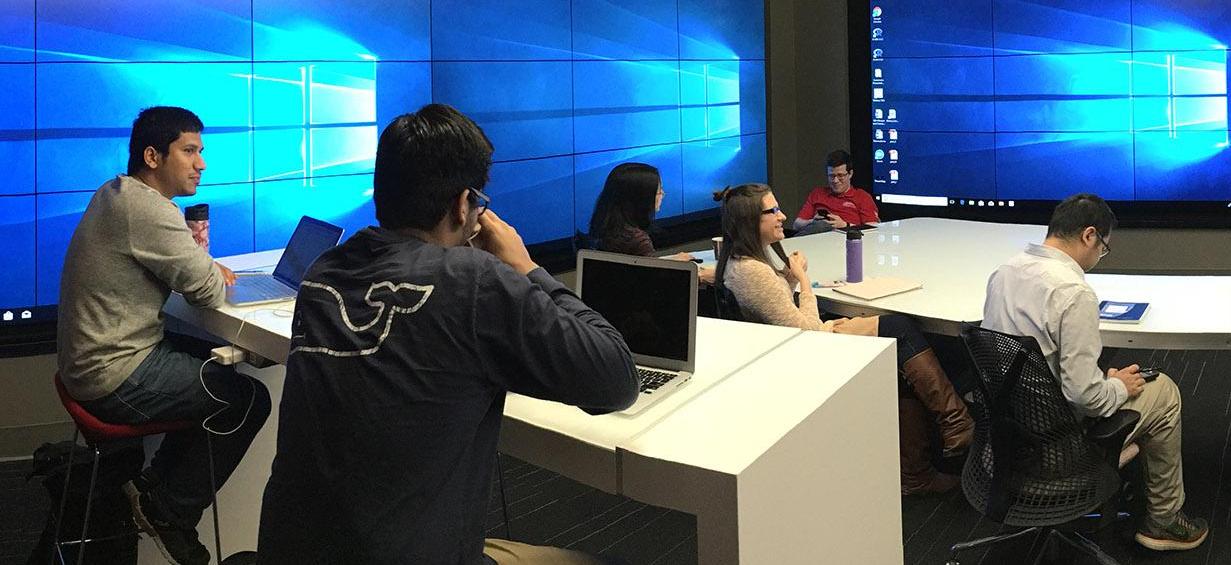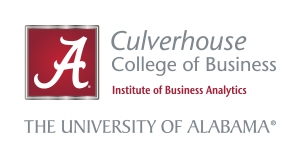- Customer Success Stories
- The University of Alabama

Hands-on analytics training prepares students for real world

Lab provides experiential learning for MBA students on analytical track.

4
Large interactive video walls to enhance collaboration
The University of Alabama achieved this using • SAS® Visual Analytics • SAS® Enterprise Miner™ • Base SAS®
SAS® powers analytics lab at the University of Alabama to connect students with potential employers
Transitioning from the classroom to a career in analytics can be a jolt for many students. Especially when, after sitting in lecture halls, they suddenly find themselves problem solving with messy data in intensely collaborative work environments. To better prepare students for the workforce, some universities are offering a taste of the real world in the classroom.
The University of Alabama’s Culverhouse College of Commerce is doing just that. They understand that in traditional work environments, data is often diverse, chaotic and complex – and problems are inherently more complicated. Administrators and professors know students must be armed with analytical skills to solve problems, and communication skills to share and explain results across the business.
The University’s Marillyn A. Hewson Data Analytics Lab helps students prepare for a career in analytics by fostering collaboration across government, industry and academia. The lab partners with organizations to bring their challenges into the classroom – helping businesses anticipate and solve critical problems, while helping students develop the skills needed to be successful.
We find unique opportunities for partnerships that give students the chance to solve real-world problems while gaining experience that is difficult to achieve inside a classroom alone.Jason Parton Director of the Institute of Business Analytics The University of Alabama
Real-world problems
The lab augments the traditional classroom experience by focusing on the development and application of analytics technology, and providing hands-on experiences for students. This in turn strengthens the analytics talent pool by graduating students with skills and experience gained from solving real-world problems.
The lab’s connection with industry is key, says Jason Parton, Director of the Institute of Business Analytics, who manages the lab. “We find unique opportunities for partnerships that give students the chance to solve real-world problems while gaining experience that is difficult to achieve inside a classroom alone.”
Experiential learning
Before completing their degrees, MBA students on the analytical track must present their findings from an industry-originated problem. Although room capacity is limited to about 15 people, the four impressively large video walls at right angles to one another make for an ideal environment for collaborative work and presenting findings to faculty as well as external constituents.
Unlike typical conference rooms, where a presenter stands behind a podium, the lab creates a flexible, open space where students are free to move about and interact with the video walls and interactive display, each showing a different view of the project. The lab was designed to encourage that type of delivery and flow of insights and even provides dry erase tables for brainstorming exchanges.
Presenting their findings in this way challenges students to not only analyze but communicate and collaborate. “Companies that have seen students present here are very impressed by their ability to generate insights and the results from SAS’ data visualization and analytics tools,” says Cali Davis, Applied Statistics Clinical Instructor at Culverhouse. “They also like being able to evaluate the soft skills of the presenters.”
The University of Alabama – Facts & Figures
15
Lab capacity
2017
Year lab opened
$$
High demand for graduates
Real-world experience in high demand
Davis admits not all students immediately understand that the goal is to focus on problem solving and experiential learning. But she knows their future employers appreciate that graduates of Culverhouse can hit the ground running.
She shared one employer’s feedback: “We love that on day one, graduates can build a predictive model and we didn't have to teach them how to do that. This has saved us so much time and so many resources.”
Partnering with SAS
Through a partnership with SAS, the university provides students in the analytics lab with access to SAS Visual Analytics, SAS® Enterprise Miner™ and Base SAS. SAS also provides curriculum materials, sample data sets and continued support.
“Because of SAS, we have analytic platforms we trust and depend on for supporting us in our mission to promote the creation, translation and dissemination of knowledge through applied analytic science,” explains Parton. “These tools are vital in our students’ development for learning and applying data science skills to various research undertakings, both in academia and industry.”
Davis appreciates SAS’ quick support. “If we have a question, we can get on the phone and get a solution within an hour … as opposed to throwing it on a discussion board and waiting until somebody has the same issue. This level of support is pivotal in the creation of a program where you're focusing so heavily on analytics.”
